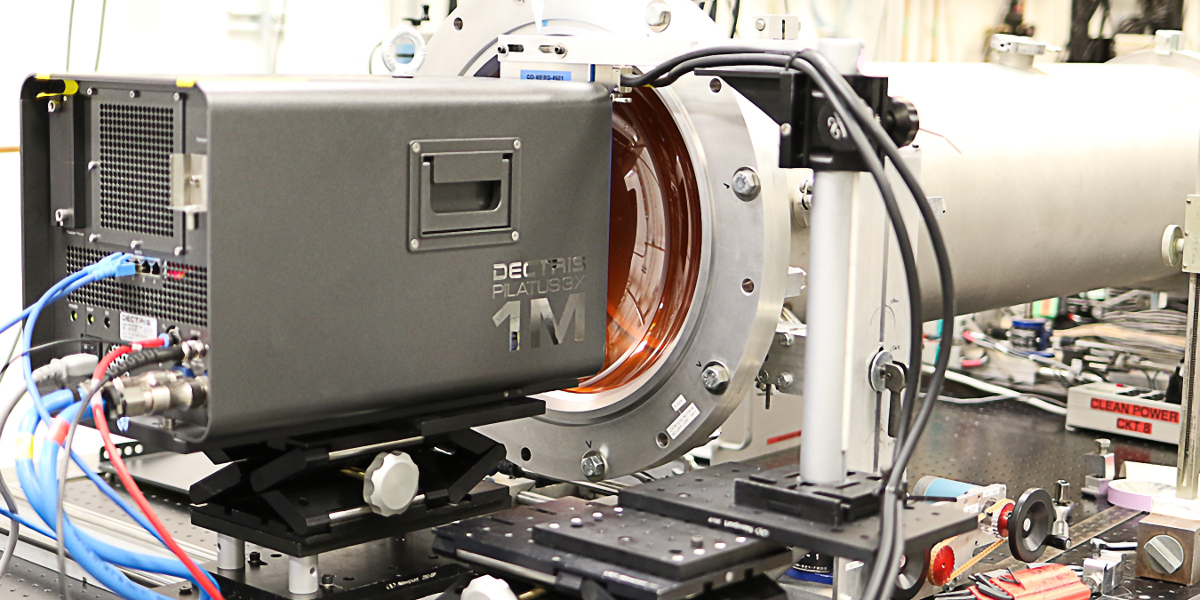
The beamline has an array of detectors to enable different experiments. Below are listed the types and specific detectors routinely available at the beamline. BioCAT also has an array of legacy detectors that can be used as backup or supplements for these systems.
Pixel Array Detectors
Pixel Array Detectors (PADs) are newer, photon counting detectors. They generally have larger pixel sizes than CCD detectors, but provide a number of benefits: fast read out times, zero dark current, high dynamic range, and no (1 pixel) point spread functions.
BioCAT has the following PADs routinely available:
- Eiger2 XE 9M - A detector with 3,108 x 3,262 72 µm pixels and a 233.1 x 244.7 mm active area, able to frame at up to 550 Hz.
- Pilatus3 X 1M - A detector with 981 x 1043 172 µm pixels and a 168.7 x 179.4 mm2 active area, able to frame at up to 500 Hz.
- Merlin x2 - Two detectors based on the Medipix3 chip with 55 µm pixels and capable of framing continuously at 200 Hz or for ~ 1 s burst at 1000 Hz. BioCAT has two form factors, one with 256 x 1024 pixels for an active area of 14 x 56 mm2. The other with 512 x 512 55 µm pixels for an active area 28.2 x 28.2 mm2. Their very small packaging allows them to be used in combination with other detectors to provide high spatial resolution in selected parts of a pattern.
- EIGER X 500K - A detector with 1030 x 514 75 µm pixels and a 77.2 x 38.6 mm2 active area, able to frame at up to 3 kHz.
CCD Detectors
CCD detectors are an older technology, and benefit from smaller pixel sizes than the pixel array detectors. However, they suffer from generally slower readouts, non-zero dark current, relatively low dynamic range, and large point spread functions due to their phosphor screens.
BioCAT has the following CCD detector routinely available:
- MAR165 - A detector with a 165 mm diameter active area, standard mode 2k x 2k 80 µm pixels, ~1 ADU/ 12 keV X-ray photon. The MAR detector has been upgraded with baseline stabilization electronics and a thinner phosphor (~65 µm psf function) so it can be used in unbinned mode with 40 µm pixels.
Silicon Drift Detectors
Silicon drift detectors are energy resolving detectors with relatively high count rates.
BioCAT has the following silicon drift detector routinely available:
- Vortex - A four-element detector with each element having 50 x 50 mm2 active area. The Vortex detector uses the XIA DXP-XMAP electronics for collection and analysis of fluorescent signals.